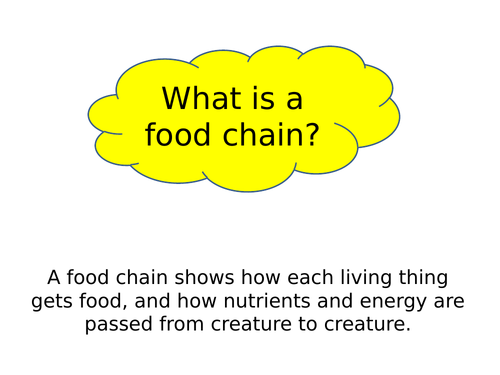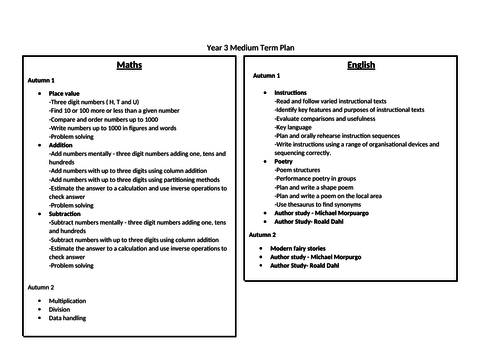
41Uploads
12k+Views
489Downloads
All resources

Food diary or log
A easy weekly food diary to record and log the different food, drinks and snack you consume within a week.
This food diary is simple for students to use to understand their food and drink intakes - this log can help students to control their eating habits; as well as being expanded upon to understand different food groups, balanced diets, food/ calorie intakes.
Student have found this log enjoyable and allows them to understand they make be over or under consuming each week.

Shopping money game - Coin recognition
Game to be played in a small group - great for learning and understand money for a variety of ages and also a fabulous resource to encourage coin recognition.
Game can either be played with plastic coins or real money for a chidlren’s money box or spare change jar. Each player will start with £1.
The game involves counting money through giving and receiving. All players must start on the start square; when it is your turn you will roll a di and move the amount of spaces on the game board. You must read what the square says and follow the instruction e.g. you spend 10p at the fair; if you land of this square you would count out 10p through coin recognition and give the money to a player of your choice.
The person at the end of the game with the most amount of money will win.

Name and recognise the quadrilateral game
Students to work in small groups or with partners to play the game. The game focuses on a range of different quadrilateral shapes (shapes with 4 sides); Students to either roll the di or use a spinner on the spinning wheel at the top, if using a di the spinning wheel at the top will need labelled with the numbers 1-6.
Students will either roll their di or spin a spinner and which ever shape name it lands on they will then cover this with a counter.
For example:
If the spinner lands on rectangle the student will need to look for the shape which is a rectangle and cover this over.
If there if no more rectangles available then the students would not cover a shape. Once all shapes are covered the student which covered the most shapes wins the game.

Name the shape game
A great game to begin to learn the name of basic 2D and 3D shapes.
Students will need to follow the the game board; they will roll a di and which ever number it lands on this is how many squares they will move. Once they have rolled and moved their counter they will need to name the shape. If you get the name correct you can stay on this square, if you incorrectly name the shape you must go back to the square you can from.
Interact game to be played in a small group at school or a family game to play at home - a fun maths game!

Sweet invention-Charlie and the Chocolate Factory
A resource to complete with students and children either after watching Charlie and the Chocolate Factory or a great English resource to help with imagination.
Worksheet links to both Science (Inventions) and English (creative).
Students can think about and create their own sweets for the film Charlie and the Chocolate Factory.
Extension: student may wish to write about what their sweet would taste like or look like to create imagination for the reader.

Food Chains
A very good visual representation for students involving food chains.
Student will need to cut and stick the top 3 food chains individually and place these into the correct order; showing which animal or plant gives energy to the next animal or plant.
Challenge:
Students can create their own food chains using their own consumers and producers. (consumer eats other plants or animals) (producer grows for animals to eat e.g. grass)
Extension:
Food chains have consumers and producers, can the student name the consumers and consumers within the different food chain.

Human body organs
This resource is great for students of all ages to recognise organs within the human body.
Pupils are given an empty diagram of the human body and are required to label the key organs; once the organs have been labelled and students can then colour each part of the human body using the matching key.
In order to extend learning students can either use their own knowledge or research why certain organs are important and the functions within the body.

Food chains - producers, consumers and decomposers
A lesson PowerPoint discussing the meaning of food chains, a definition of key words of the topic - consumers, producers, decomposers, herbivores, carnivores and omnivores. Students at the end of the lesson will be able to create their own food chains and show the different key word for each organism.

What is a food chain?
A lesson complete in Science; students learning about different animals and which animals like to eat other animals. Show examples of different food chains and helps students to create their own food chain.
Can easily create class discussions as well as students being able to openly talk about animals and what they already know.

School council application form
A school council application form, form can be given to the whole school. Students who wish to be on the School Council can fill in an application form explaining why they think they should be chosen to represent their class and school as a member of the School Council.

Fitness - circuit fitness progression chart
Students to work in partners for a 4 week period, recording their fitness gains on a week by week progress. Students should show progress over 4 weeks; as they are aware of their previous scores students build up stamina and strength as they progress in their physical education ability.

Swimming Skills - Stages 1 - 6
Stages 1 - 6 swimming skills.
Skills based swimming programme for school swimming lessons. Building water safety confidence, floating techniques, stroke technique and different activites to build up swimming confidence and skills.

Germination of a seed - Experiment planning sheet
A planning sheet for a step by step layout for germination of a seed experiment.
Students in the class all to be given different conditions, no water, no light, no air, no warmth and all conditions; after a few weeks students to see which type of condition was the best to germinate the seeds.

Water transportation experiment
A planning sheet to show water transportation using food colouring. Students can set out their own work correctly in a step by step process by using this sheet.
2 sided planning sheet.
Food colouring water transportation.
Investigation:
Food colouring, a white flower, boiling tube and water. The stem of the flower will soak up the food colouring and change the colour of the petals.
Works best with white petals and dark food colouring.

Water transportation in plants - Investigation
A powerpoint showing the process a plants goes through to complete water transportation, as well as a food colour experiment.
Investigation:
Food colouring water transportation experiment. When food colouring is added to the water in the test tube, the stem will begin to soak up the water and the petals of the flower will change colour. White petals needed and dark food colouring works best.
Step by step method, video of experiment as well as appropriate investigation for KS2 pupils.

Addition Dienes rod lesson
Power point lesson plan including all the learning objectives and outcomes for different ability groups.
To recognise the value of a digit using Dienes rods
Explain how a number is bigger or smaller by recognising the place value
Can be used as a whole group or intervention group.
Resources needing Dienes Rods.
Slide - What is in the bag?
Is a independent activity where students choose a bag, in each bag there will be a different number of tens and units.
Students to count the amount and record these into their maths book or sheet.

Can you guess my number?
Can use this game for all ranges of Maths. Additon, subtraction, multiplication and division.
Great for mental calculations as well as written methods.
Mastery by using and applying knowledge at the end of a topic.
Students work in partners and both choose a number on the hundred square. They then take it in turns to ask each other mathematical questions in order to try guess the number their partner is thinking of.

Year 3 - Medium term plan
Year 3 medium term plan for 1 term.
Plan includes all learning objectives for one term, linking into the next term of work.

Subtraction from 100
Learning objectives:
Using and applying subtraction knowledge from 100
This board game is a perfect game for a range of students due to the levels of differentiation which can be used:
Students use a number line
Students use a calculator
Students to use a 100 square
Students to use column subtraction methods
Great game for primary school or SEN students. Students to be working in partners or in a small group. Can also be used for interventions.
Each player takes it in turns to roll the dice and move along the board. When they land on a square the question must be answered; students can answer the questions in a variety of ways according to their personal attainment (see differentiation above)

Addition within 100 game
Learning objectives:
Using and applying addition knowledge for TU + TU
This board game is a perfect game for a range of students due to the levels of differentiation which can be used:
Students use a number line
Students use a calculator
Students to use a 100 square
Students to use column addition methods
Great game for primary school or SEN students. Students to be working in partners or in a small group. Can also be used for interventions.
Each player takes it in turns to roll the dice and move along the board. When they land on a number the question must be answered; students can answer the questions in a variety of ways according to their personal attainment (see differentiation above)




















